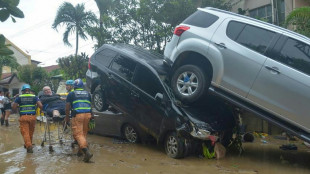
-
 Shein opens first permanent store amid heavy police presence
Shein opens first permanent store amid heavy police presence
-
West Indies edge New Zealand despite Santner brilliance

-
 French pair released by Iran await return home
French pair released by Iran await return home
-
German factory orders up but outlook still muted

-
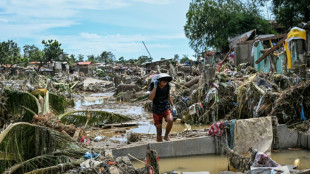 Death toll tops 100 as Philippines digs out after typhoon
Death toll tops 100 as Philippines digs out after typhoon
-
Attack on key city in Sudan's Kordofan region kills 40: UN

-
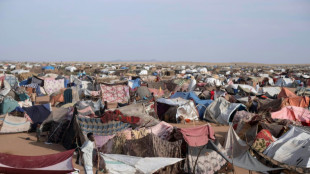 'No one could stop it': Sudanese describe mass rapes while fleeing El-Fasher
'No one could stop it': Sudanese describe mass rapes while fleeing El-Fasher
-
Champagne and cheers across New York as Mamdani soars to victory

-
 Medieval tower collapse adds to Italy's workplace toll
Medieval tower collapse adds to Italy's workplace toll
-
BMW boosts profitability despite China, tariff woes

-
 South Africa's Wiese wary of 'hurt' France before re-match
South Africa's Wiese wary of 'hurt' France before re-match
-
Asian markets sink as tech bubble fears grow

-
 Beyond limits: Croatian freediver's breathtaking record
Beyond limits: Croatian freediver's breathtaking record
-
Tottenham supporting Udogie after alleged gun threat in London

-
 Thunder roll Clippers to stay unbeaten as SGA keeps streak alive
Thunder roll Clippers to stay unbeaten as SGA keeps streak alive
-
In appeal, Australian mushroom murderer alleges 'miscarriage of justice'

-
 Toyota hikes profit forecasts 'despite US tariffs'
Toyota hikes profit forecasts 'despite US tariffs'
-
Typhoon death toll soars past 90 in the Philippines
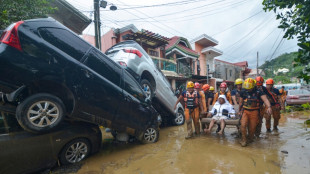
-
 Ex-France lock Willemse challenges Meafou to become 'the bully'
Ex-France lock Willemse challenges Meafou to become 'the bully'
-
Ukrainians to honour sporting dead by building country they 'died for': minister

-
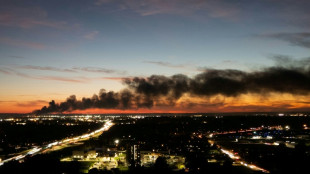 At least 7 dead after UPS cargo plane crashes near Louisville airport
At least 7 dead after UPS cargo plane crashes near Louisville airport
-
US Supreme Court hears challenge to Trump tariff powers

-
 US government shutdown becomes longest in history
US government shutdown becomes longest in history
-
India's Modi readies bellwether poll in poorest state

-
 Green goals versus growth needs: India's climate scorecard
Green goals versus growth needs: India's climate scorecard
-
Where things stand on China-US trade after Trump and Xi talk

-
 Sri Lanka targets big fish in anti-corruption push
Sri Lanka targets big fish in anti-corruption push
-
NY elects leftist mayor on big election night for Democrats

-
 Injured Jordie Barrett to miss rest of All Blacks tour
Injured Jordie Barrett to miss rest of All Blacks tour
-
Asian markets tumble as tech bubble fears grow

-
 Pay to protect: Brazil pitches new forest fund at COP30
Pay to protect: Brazil pitches new forest fund at COP30
-
Australia pick 'impressive' Weatherald in first Ashes Test squad

-
 Iraq's social media mercenaries dying for Russia
Iraq's social media mercenaries dying for Russia
-
Young leftist Trump foe elected New York mayor

-
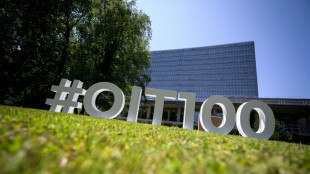 Concerns at ILO over expected appointment of close Trump advisor
Concerns at ILO over expected appointment of close Trump advisor
-
Venus Williams to return to Auckland Classic at the age of 45

-
 No deal yet on EU climate targets as COP30 looms
No deal yet on EU climate targets as COP30 looms
-
Typhoon death toll climbs to 66 in the Philippines
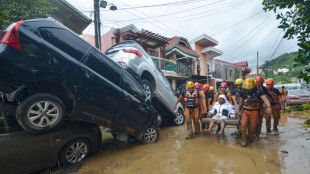
-
 NATO tests war preparedness on eastern flank facing Russia
NATO tests war preparedness on eastern flank facing Russia
-
Uncapped opener Weatherald in Australia squad for first Ashes Test

-
 CelLBxHealth PLC Presents Proof-of-Concept Study
CelLBxHealth PLC Presents Proof-of-Concept Study
-
Evotec SE Reports 9M 2025 Results: Continued Strong Execution on Strategic Priorities

-
 Coca-Cola Europacific Partners plc Announces Q3 Trading Update & Interim Dividend Declaration
Coca-Cola Europacific Partners plc Announces Q3 Trading Update & Interim Dividend Declaration
-
Sassy Gold Announces Cease Trade Order

-
 Gander Gold Announces Cease Trade Order
Gander Gold Announces Cease Trade Order
-
Ternium to Acquire Nippon Groups' Remainder Participation in Usiminas' Control Group

-
 Liverpool down Real Madrid in Champions League, Bayern edge PSG
Liverpool down Real Madrid in Champions League, Bayern edge PSG
-
Van Dijk tells Liverpool to keep calm and follow Arsenal's lead

-
 PSG left to sweat on injuries to Dembele and Hakimi
PSG left to sweat on injuries to Dembele and Hakimi
-
Reddit, Kick to be included in Australia's social media ban


A hurricane-proof town? Florida community may be a test case
When Hurricane Ian churned past her home in southwest Florida last year, Mary Frisbee shrugged off worries. She watched TV and surfed the internet.
That's because she and her husband live in Babcock Ranch, a town near the US Gulf Coast that was created with two imperatives: homes have to be built sustainably, and must be able to withstand hurricanes, a constant menace.
The community takes nature deeply into account.
To avoid flooding caused by storms, Babcock Ranch is built some nine meters (30 feet) above sea level. Town planners also preserved wetlands in the area, which act as sponges for excess water.
Local lakes are interconnected with the wetlands by a system of pumps that prevent overflows. And if they do occur, water floods the streets, roads and ponds, not the houses.
The first test came in September 2022 with Ian, a powerful category 4 hurricane, and it was a success. No resident suffered major damage, there were no power outages and only a few trees fell.
- From theory to practice -
Babcock Ranch seems lifted from a postcard. Homes with perfect lawns overlook lakes. Bike paths and forest roads wend through the community. In the parks, kids ride bikes or climb on swings, supervised by parents or grandparents.
The town, which opened in 2018, has 7,200 residents, but continues to expand with new neighborhoods. Eventually it is expected to have a population of about 50,000.
Syd Kitson, a retired professional US soccer player, is the developer. In 2005, his company paid $700 million for a 372 square kilometer (92,000 acre) ranch, most of which it sold to the state of Florida, which wanted to establish a nature reserve there.
On the land he kept -- some 72 square kilometers (18,000 acres) -- Kitson conceived his dream city: a place with housing, stores and schools that would attract young families and retirees choosing to make their home in the Florida sun.
On the outskirts, 680,000 solar panels make the city the first in the United States to run entirely on solar. Power lines are buried underground to protect them from wind and prevent outages during storms.
On paper, everything looked good. But then on September 28, 2022, Ian came roaring through.
And the trust that homeowners like Mary Frisbee or Donald Bishop, a 78-year-old neighbor who had already lost a house in Mississippi to a hurricane, had placed in Babcock Ranch was put to the test.
Kitson said he couldn't sleep on the night of the storm.
"We hadn't been tested yet, so you never know. At the time, there were about 5,000 people living here, neighbors who I had told, 'You can shelter at home.' I felt this really strong responsibility," Kitson recalled.
He was relieved to find that Ian, which churned ashore with 150 mile-per-hour winds and torrential rains that devastated neighboring Fort Myers and left nearly 150 dead, barely damaged his town.
Elsewhere in the state, damages were estimated at over $110 billion.
- A template for elsewhere? –
Most Floridians can't have the protections afforded the residents of Babcock Ranch. They live on lower ground.
Of the state's 19.6 million people, 15 million live in coastal areas, the US government's Office for Coastal Management says.
Still, Kitson believes that the ideas put into practice at Babcock Ranch can provide an example to others.
It is a view shared by Yoca Arditi-Rocha, executive director of the environmental NGO the Cleo Institute, who believes the biggest lesson from the community is that "we need to build our cities and our communities with a climate change of mind."
That may be especially true in Florida, the fastest-growing US state yet one that is acutely vulnerable to disasters such as rising seas and hurricanes.
Babcock Ranch "proves that when you build and you plan ahead, and you invest in those resilience components, you get the return on investment in the end," Arditi-Rocha told AFP.
The activist says such planned communities are not a panacea, though, because the cost of housing is only affordable for a few.
Kitson said he took that into account at Babcock Ranch.
Some rental apartments go for $1,500 a month while home prices can start at $300,000, he said.
"You have to have a variety of housing and prices," he said. "That's very important. It's not a real city unless you can do that."
A.Mahlangu--AMWN

